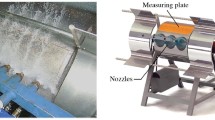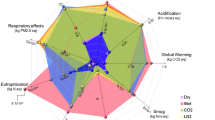Abstract
The use of computer simulation techniques in the control system design of the laminar cooling process in a hot mill can significantly reduce the development cost while ensuring maximum production safety. The case-based modelling strategy was proposed and implemented in a software package. The functional structure of the software package was discussed in detail. The interfaces and functions of the software package were introduced. The results of industrial experiments can be directly visualized in the software package, allowing accurate and instant comparison of the model predictions with real measurements. The software package provides the simulation platform for research into advanced modelling and control strategies of the laminar cooling process in a hot rolling mill.
Similar content being viewed by others
References
CHAI Tian-you, TAN Ming-hao, CHEN Xian. Intelligent Optimisation Control for Laminar Cooling [C] //Proc of the 15th IFAC World Congress. Barcelona: IFAC, 2002: 691.
TAN Ming-hao, LI Shu-jiang, PIAN Jin-xiang. Case-Based Modelling of the Laminar Cooling Process in a Hot Rolling Mill [J]. Lecture Notes in Control and Information Sciences, 2006 (344): 264.
SHA Xiao-chun, LI Dian-zhong, LAN Yong-jun. Modelling the Temperature Distribution Along the Length of Strip During Hot Rolling Process [J]. Steel Research International, 2004, 75(5): 330.
Denisov S V, Gorshkov S N, Shargunov A V. Technology for the Hot Rolling of Strip After Modernization of the Laminar-Cooling Unit on the Roller Conveyor of the 2500 Hot-Rolling Mill [J]. Metallurgist, 2007, 51(1): 41.
GONG Dian-yao, XU Jian-zhong, PENG Liang-gui. Self-Learning and Its Application to Laminar Cooling Model of Hot Rolled Strip [J]. Journal of Iron and Steel Research International, 2007, 14(4): 11.
WANG Jun, WANG Guo-dong, LIU Xiang-hua. Hot Strip Laminar Cooling Control Model [J]. Journal of Iron and Steel Research International, 2004, 11(5): 13.
Auzinger D, Parzer F, Posch G. Process Optimization for Laminar Cooling [J]. Iron and Steel Engineer, 1998, 75: 45.
Ditzhuijzen V G. The Controlled Cooling of Hot Rolled Strip, A Combination of Physical Modelling, Control Problems and Practical Adaptation [J]. IEEE Transactions on Automatic Control, 1993, 38: 1060.
Simon C K S, Sankar K P. Case-Based Reasoning: Concepts, Features and Soft Computing [J]. Applied Intelligence, 2004, 21(3): 233.
Watson I. Capturing and Applying Lessons Learned During Engineering Equipment Installation [J]. Lecture Notes in Artificial Intelligence, 2004(321): 1249.
Kolodner J L, Gray J, Fasse B B. Promoting Transfer Through Case-Based Reasoning: Rituals and Practices in Learning by Design Classrooms [J]. Cognitive Science Quarterly, 2003, 3(2): 183.
Author information
Authors and Affiliations
Corresponding author
Additional information
Foundation Item: Item Sponsored by National Natural Science Foundation of China (60772055)
Rights and permissions
About this article
Cite this article
Tan, Mh., Li, Sj. & Chai, Ty. Model software package development for laminar cooling process in hot mill. J. Iron Steel Res. Int. 17, 23–27 (2010). https://doi.org/10.1016/S1006-706X(10)60094-5
Received:
Published:
Issue Date:
DOI: https://doi.org/10.1016/S1006-706X(10)60094-5




